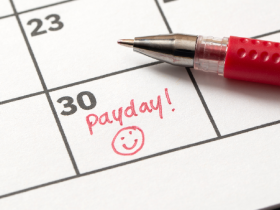Starting a limited company can be confusing at the best of times, especially with the added frustration of understanding and successfully paying PAYE.
PAYE (pay as you earn) is a method of paying income tax and national insurance (NI) to HMRC. Every employee in the UK pays tax and the amount is dependent on how much that person earns. With PAYE, the employer deducts the income tax and NI from their employees’ wages, and then reports their pay and deductions to HMRC. The employer also pays these deductions to HMRC on their employees’ behalf.
So, if you’re the director of a limited company, even if you’re also the owner, you’re technically also an employee. That means that if you pay yourself using a director’s payroll, that your company, as your employer, must report this through PAYE.
Here’s a step-by-step guide to walk you through the process.
Register your company for PAYE
If you’re just setting up payroll for a limited company, you’ll need to register with HMRC. The process only takes a few minutes. All you will need is the amount of employees (including yourself), the frequency of PAYE payments to be made, and the date of the first PAYE payment.
Set up payroll
A payroll system uses the employee’s details to calculate how much PAYE will be deducted from their payslip each month. This is where hiring an accountant comes in useful. Payroll calculations can be time consuming, and confusing!
Payslips
You’ll need to provide every employee with a payslip each time you pay them, confirming what their wages are, and how much you’ve deducted.
Pay PAYE
After you have paid employees it will be necessary to pay PAYE to HMRC. This is the amount you deduct from your employees’ wages. Failure to do so will incur hefty fines from HMRC, and all sorts of uncomfortable chats with angry employees. This is an easy transaction that can be completed online.
Still unsure about paying PAYE? Speak to one of our accountants today to see how they can help!









Leave a Reply